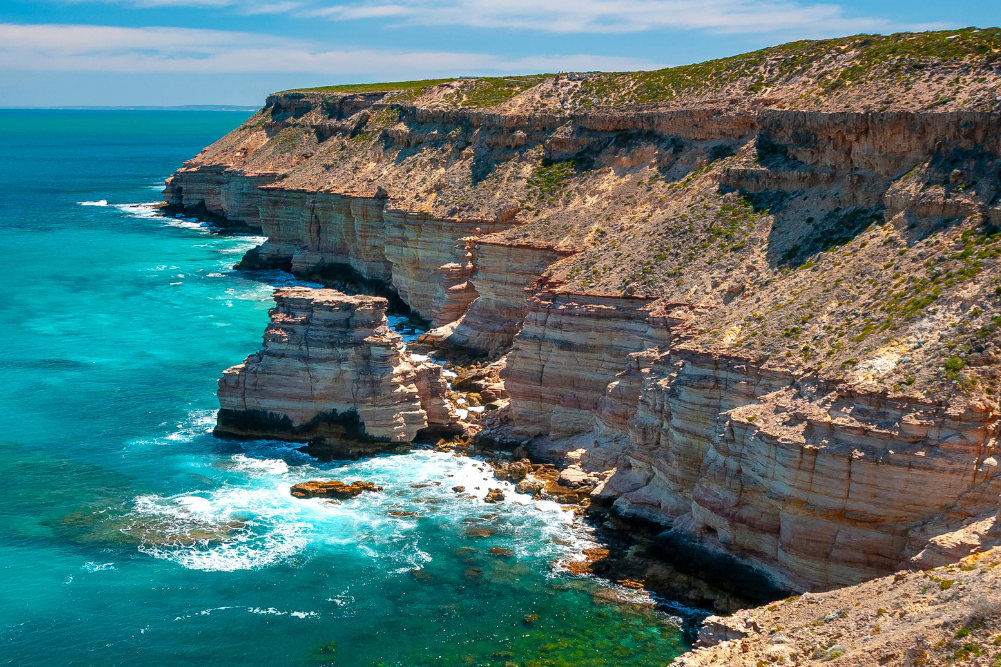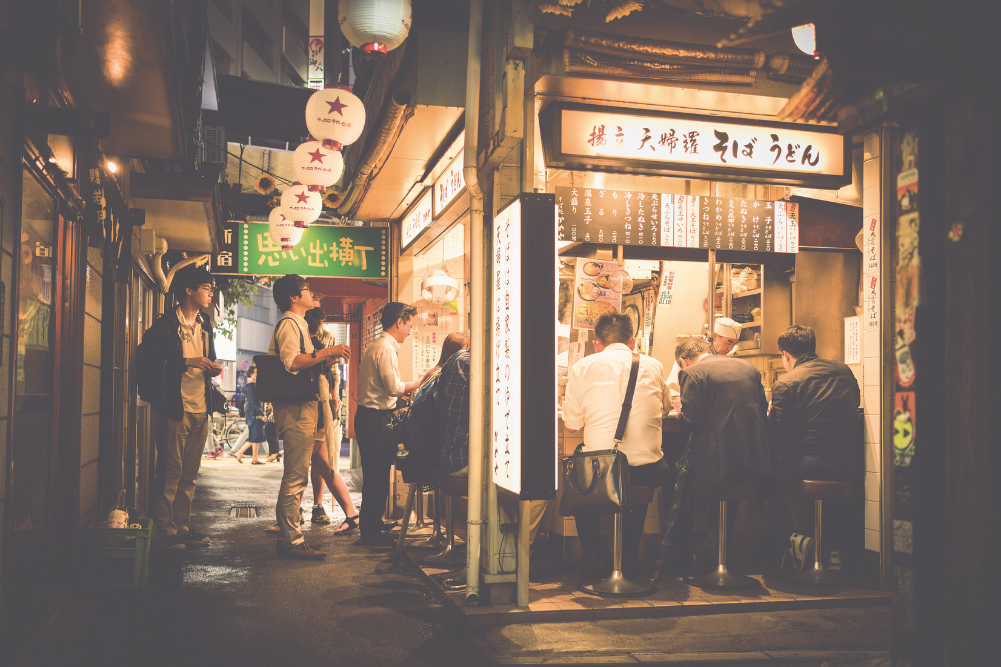Fossil fun in outback Queensland
I’ve caught a lot of things in my life but fossil fever is by far the most contagious and the hardest to recover from. I’d never really been interested in rocks or fossils but that all changes in the blink of an eye, or more precisely, the tap of a pick, when the very first rock I split open reveals two beautiful imprints of prehistoric shells, the second a fragment of the coiled armour of an ancient ammonite. But it’s what we find a few minutes later than has me well and truly hooked: a perfectly preserved section of the serrated pectoral fin of a three-metre-long 100-million-year-old pachycormid, better known as the fang faced swordfish.
I’m in Richmond, a tiny, blink-and-you’ll-miss-it town in outback Queensland, 500km west of Townsville and almost 1600km northwest of Brisbane. It’s wide-open country, a vast plain covered by a never-ending rolling sea of Mitchell grass. A hundred million years ago it was an inland sea, teeming with massive marine reptiles, such as the carnivorous kronosaurus, as big as 10 metres long with teeth as long as a school ruler and a head almost twice the size of a T-rex’s.
The water and super-sized reptiles are long gone but the sediments of the ancient muddy sea bed provided the perfect resting place for many of them and the plains of western Queensland are one of the richest dinosaur and fossil fields in the world. New discoveries are being made all the time, dug up by local graziers or even by visitors passing through.
The day before, at Kronosarus Korner, the museum in Richmond named after the massive prehistoric beast unearthed in Richmond in 1932, I’d met the Gordon family from Bathurst. They were hunched over the snout of an icthyosuraus (a seven-metre-long dolphin-like reptile) in the fossil lab of the museum with the resident palaeontologist, Paul Stumkat. Keen fossickers, they’d found the skull section in the Richmond fossil hunting area 12km from town the year before when they were on holiday and they’d come back this year to help excavate it and prepare it for display in the museum, meticulously removing with tiny picks and brushes the rock from around the fossilised bones.
If they can find one, maybe I can, too, so I arrange to meet the next day with Paul and Rod, another Melburnian holidaymaker with fossil fever volunteering at the museum, at the site where the icthyosuraus was found.
The fossil hunting area at Richmond is on the town common, which means anyone is free to fossick. All you need is a small pick or chisel and hammer; if you don’t have either, you can buy one for a few dollars in the museum gift shop. And, while you don’t have to be an expert to find a fossil, you do need to know what you are looking at, so the staff at the museum encourage people to bring back their finds for identification. Unless it’s a special find that really deserves to be on display in a museum — Gordon’s icthyosuraus, for example — it’s finders keepers and you can take your fossil home with you.
While my fang faced swordfish fin isn’t rare enough to excite the scientific world, Paul says it’s a nice specimen worth preparing and preserving, so we head back to the lab at the museum where he shows me how to use a tiny drill to remove the rock from around the fossilised fin. It’s painstaking work that requires both patience (not my strong point) and a steady hand, but watching the prehistoric fragment take shape is quite exhilarating.
While I’m waiting for the protective acrylic coating to dry I wander around the museum, checking out the various icthyosuraus, turtles, fish, ammonites and other fossils on display. Pride of place is Richmond Pliosaur, the best-preserved marine vertebrate skeleton in Australia. Until recentlym the almost complete skeleton was held at the Queensland Museum, but it’s come back to Richmond where it was found and is now housed in a new gallery within the museum.
Another special exhibit is the Minmi, an armoured dinosaur discovered nearby in 1989. There are various bits of kronosaurus on display, but sadly the almost complete skeleton of the first one found in Richmond in 1932 went back with its finders to Harvard University in the US. There’s a life-size model outside the museum, though, and you get a good idea of just how big these creatures were as you watch (adult) visitors climb up to sit inside its open jaws for a photo.
There’s a life-size model of another dinosaur 115km up the road at Hughenden that’s just as popular with posing tourists, a seven-metre-high muttaburrasaurus, fondly known as Mutt, outside the now derelict Grand Hotel. The muttaburrasaurus, or parts of him or her, was found nearby in Muttaburra in 1963 and there’s a skeletal replica in the Flinders Discovery Centre in Hughenden, along with a display of fossils and other dinosaur bones (and, rather weirdly, a display of old wedding dresses beside the dinosaur: bridezilla perhaps?).
But it’s in Winton, two-and-half-hours’ drive south, where you really get a sense of what these vast plains that were once an inland sea must have been like when dinosaurs roamed. Lark Quarry is the world’s only known site of a dinosaur stampede. Around 95 million years ago, a large meat-eating dinosaur startled and chased a horde of much smaller dinosaurs on the muddy shores of a lake. The 3300-odd footprints made in the mud have been fossilised and the palaeontologists believe there were at least 150 dinosaurs involved, some the size of chickens, others the size of emus. The hunter was a large theropod, probably about eight or nine metres long, with sharp claws and even sharper teeth.
No one quite knows what the marauding therapod was but there’s a theory that it could have been the same type of dinosaur found near Winton in 2006, Australovenator wintonensis, otherwise known as Banjo. (Banjo Patterson wrote Waltzing Matilda while visiting friends near Winton in 1895.) Banjo is the largest carnivorous dinosaur and the most complete theropod skeleton yet found in Australia, and is on display at the brand-new Age of Dinosaurs Museum on the outskirts of town, along with bones of the 15-metre-long plant-eating Matilda (Diamantinasaurus matildae) and an as yet scientifically unnamed sauropod (nicknamed Wade) found in 2010, which is thought to have been bigger still.
New discoveries continue to be unearthed. The adjoining fossil preparation lab, included as part of a tour of the museum, is the biggest in the Southern Hemisphere, but we’re told it has a 35-year backlog of bones encased in plaster jackets waiting to be prepped, despite an army of willing helpers who join the centre’s prep-a-dino course, a one-day induction program open to over-12s where you help prepare fossils. Three times a year, the centre runs Dinosaur Discovery weeks and you can work with the palaeontologists on the dinosaur dig sites. You don’t need any experience but you do need to plan ahead — positions fill fast. But be warned: once you have fossil fever, you’ll never be able to look at a rock in quite the same way again.
Doing the dino trail with kidsThe Queensland Dinosaur Trail is great for kids, particularly those with a fascination for dinosaurs. They’ll love looking for fossils at Richmond as you’re pretty much guaranteed to find fossilised shells within a few minutes, ideal for short attention spans. The shale rock is easy to split with a gentle tap, so most primary-school-age kids should be able to chip away quite happily (although gloves and close supervision are recommended, just in case their aim is out). Kronosaurus Korner even has a play area where little kids can dig for plastic dinosaurs. However, distances between attractions are vast (by bored-kid-in-the-back-seat standards) and there is quite a lot of driving with not much to see and do along the way (an average of two hours between towns). Pick up a free copy of theDino Diary and Passport at Flinders Discovery Centre (Hughenden), Kronosaurus Korner (Richmond) or the Trackways Tour (Winton). It’s a dino-themed activity book with puzzles, car games, colouring-in and awful dinosaur jokes (Which dinosaur slept all day? The dino-snore!) and kids can get it stamped at each of the attractions along the way. |
LongreachLongreach is the gateway to outback Queensland and worth visiting for a day or two. You can easily spend half a day or more at the Australian Stockman’s Hall of Fame, a huge museum depicting all aspects of outback life (not just stockmen — the name is a trifle misleading). There are three inter-connecting levels, with exhibits on everything from explorers and bush sports to droving, transport and the Royal Flying Doctor Service. Just across the road is the Qantas Founders Museum, where you can take a walk onto the wing of a 747, tour a fully equipped jumbo jet and a 707 that once belonged to a sheik, complete with gold-plated seatbelt buckles. If you ever wanted to know what goes on behind the scenes while you’re cruising at 30,000 feet, this is the place to find out. The town is named after a “long reach” of the Thomson River and a highlight of any stay is a sunset river cruise. Don’t miss the unique chance to ride a replica Cobb & Co coach at full gallop. More information Australian Stockman’s Hall of Fame: outbackheritage.com.au |
Travel file
How to get there
- The Dinosaur Trail, Winton–Hughenden–Richmond, is about 330km, one way. Longreach is 1175km northwest of Brisbane, around a 13-hour drive. Winton is a two-hour drive from Longreach.
- QantasLink (qantas.com.au) flies daily from Brisbane to Longreach. Car hire is available at Longreach airport.
- The Spirit of the Outback train departs Brisbane every Tuesday and Saturday and arrives in Longreach the following evening. Trains leave Longreach for Brisbane the next morning. Sleeper fares start at $259. You can take your car on the Motorail for an additional $299. T: 1300 131 722, W: railaustralia.com.au/spirit.php
Where to stay
- Kinnon & Co Outback Lodges: 63–65 Ilfracombe Road, Longreach. Two-bedroom self-contained cottages great for families. Facilities include a laundry and pool. Around $110 per night. kinnonandco.com.au
- North Gregory Hotel: 67 Elderslie Street, Winton. Stay in the pub where Waltzing Matilda was first performed. Rooms are basic, but most have ensuites. $90–$110 per night. northgregoryhotel.com
- Ammonite Inn: Goldring Street, Richmond. Motel-style units from around $115 per night. T: (07) 4741 3932.
The Dinosaur Trail
- Age of Dinosaurs Museum: the museum is 11km from the main road (the Matilda Highway, turn-off 12km east of Winton) up an unsealed gravel road. Open daily, guided tours every hour 9am–4pm. Adults $30, kids $16, family (up to 4 kids) $69. Prep-a-dino course $87 for first day, $55 each extra day (apply online) and week-long dig-a-dino $3300, including meals and accommodation (over-18s only). australianageofdinosaurs.com
- Lark Quarry Dinosaur Trackways: 110km from Winton via the Winton-Jundah road. About 65km is unsealed but fine for 2WD. Open daily. One-hour guided tours at 10am, noon and 2pm. Adults $12, kids $7, family $30. dinosaurtrackways.com.au
- Kronosaurus Korner: Goldring Street, Richmond. Open daily. Adults $20, kids $10, family $40. Apply online to volunteer to help out in the fossil lab or call (07) 4741 3429. kronosauruskorner.com.au
- Flinders Discovery Centre: 37 Gray Street, Hughenden. T: (07) 4741 2970. Open daily. Adults $5, kids $2.
- Dinopass gives you entry into Flinders Discovery Centre (Hughenden), Kronosaurus Korner (Richmond) and the Trackways Tour. Adults $20, family $50. Buy your pass at any one of the three attractions.
- More information: australiasdinosaurtrail.com or adventureoutback.com.au







